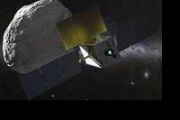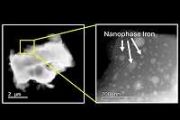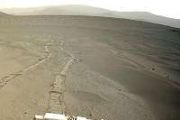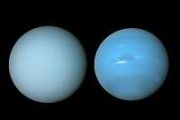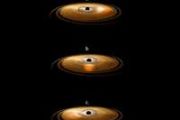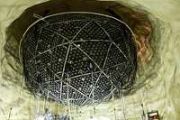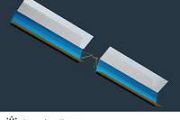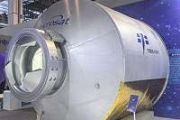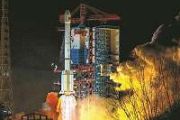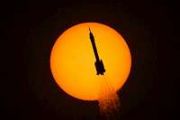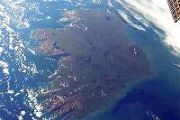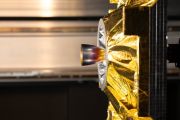
Copernical Team
NASA wraps up moon rocket test; to set launch date after fix

NASA said Thursday it has finished testing its huge moon rocket and will move it back to the launch pad in late August.
A date for the first flight will be set after a leak that popped up during a dress rehearsal is fixed, the space agency said.
Mars Reconnaissance Orbiter releasing one of its last rainbow-colored maps

Scientists are about to get a new look at Mars, thanks to a multicolored 5.6-gigapixel map. Covering 86% of the Red Planet's surface, the map reveals the distribution of dozens of key minerals. By looking at mineral distribution, scientists can better understand Mars' watery past and can prioritize which regions need to be studied in more depth.
The first portions of this map were released by NASA's Planetary Data System. Over the next six months, more will be released, completing one of the most detailed surveys of the Martian surface ever made.
Australia just flew its own 'vomit comet'. It's a big deal for zero-gravity space research

Last Saturday, a two-seater SIAI-Marchetti S.211 jet took off from Essendon Fields Airport in Melbourne with an expert aerobatic pilot at the controls and a case full of scientific experiments in the passenger seat.
Pilot Steve Gale took the jet on Australia's first commercial "parabolic flight", in which the plane flies along the path of a freely falling object, creating a short period of weightlessness for everyone and everything inside.
Parabolic flights are often a test run for the zero-gravity conditions of space. This one was operated by Australian space company Beings Systems, which plans to run regular commercial flights in coming years.
As Australia's space program begins to take off, flights like these will be in high demand.
What was on the plane?
The experiments aboard the flight were small packages developed by space science students at RMIT University.
BepiColombo surveys Mercury’s rich geology
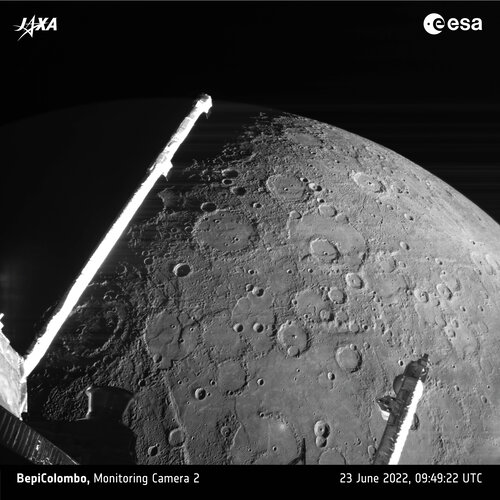 Image:
BepiColombo surveys Mercury’s rich geology
Image:
BepiColombo surveys Mercury’s rich geology Ariane 5 orbits Malaysian, Indian telecoms payloads
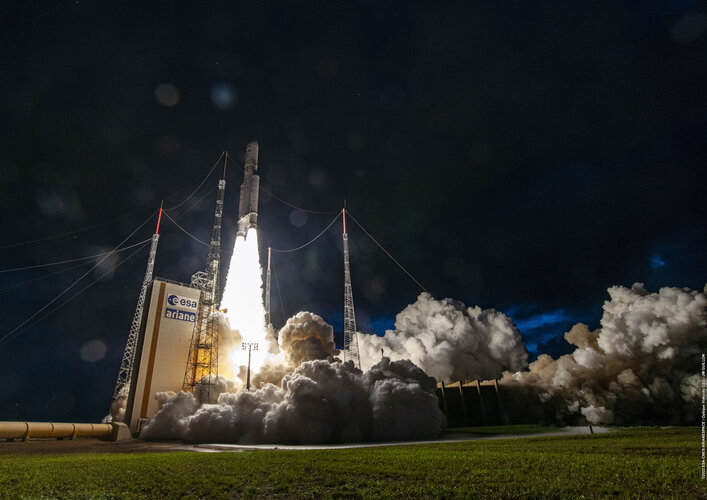
Ariane 5 has delivered two telecommunications satellites, MEASAT-3d and GSAT-24, into their planned geostationary transfer orbits.
Methane levels surged in 2020 despite lockdowns
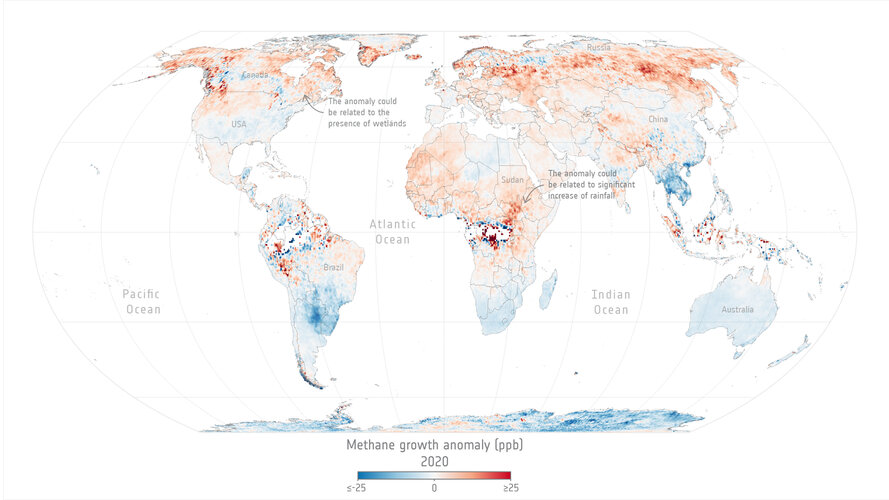
Levels of methane, the second most important greenhouse gas in our atmosphere, continued their unrelenting rise in 2020 despite the economic slowdown caused by the COVID-19 pandemic.
A team of scientists, from the University of Leeds, have used data from the Copernicus Sentinel-5P satellite to pinpoint locations with large surges of methane emissions. These findings were presented during ESA’s Living Planet Symposium which took place last month in Bonn, Germany.
Lunar science stirring on Mount Etna
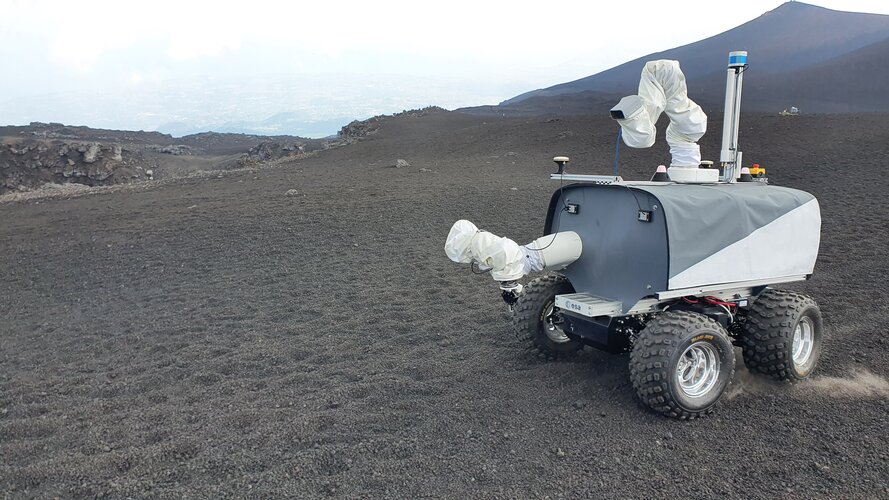 Image:
Lunar science stirring on Mount Etna
Image:
Lunar science stirring on Mount Etna Exploring globular clusters with the lens of asteroseismology
 Asteroseismology - one of the most fascinating and sophisticated methods for measuring the mass of stars, and by extension, their age - can also be successfully used to reveal the characteristics of the stars within globular clusters: very large groups of stars (in the order of hundreds of thousands) condensed in a relatively small space and all at approximately the same distance from us.
Asteroseismology - one of the most fascinating and sophisticated methods for measuring the mass of stars, and by extension, their age - can also be successfully used to reveal the characteristics of the stars within globular clusters: very large groups of stars (in the order of hundreds of thousands) condensed in a relatively small space and all at approximately the same distance from us. You can help scientists study the atmosphere on Jupiter
 A new citizen science project, led by researchers at the University of Minnesota Twin Cities with support from NASA, allows volunteers to play an important role in helping scientists learn more about the atmosphere on Jupiter. Citizen scientists can help astrophysicists categorize tens of thousands of stunning images taken from the Juno spacecraft with just a web browser.
The planet Jupite
A new citizen science project, led by researchers at the University of Minnesota Twin Cities with support from NASA, allows volunteers to play an important role in helping scientists learn more about the atmosphere on Jupiter. Citizen scientists can help astrophysicists categorize tens of thousands of stunning images taken from the Juno spacecraft with just a web browser.
The planet Jupite NASA's Webb to Uncover Riches of the Early Universe
 For decades, telescopes have helped us capture light from galaxies that formed as far back as 400 million years after the big bang - incredibly early in the context of the universe's 13.8-billion-year history. But what were galaxies like that existed even earlier, when the universe was semi-transparent at the beginning of a period known as the Era of Reionization?
NASA's next flagship obse
For decades, telescopes have helped us capture light from galaxies that formed as far back as 400 million years after the big bang - incredibly early in the context of the universe's 13.8-billion-year history. But what were galaxies like that existed even earlier, when the universe was semi-transparent at the beginning of a period known as the Era of Reionization?
NASA's next flagship obse 
